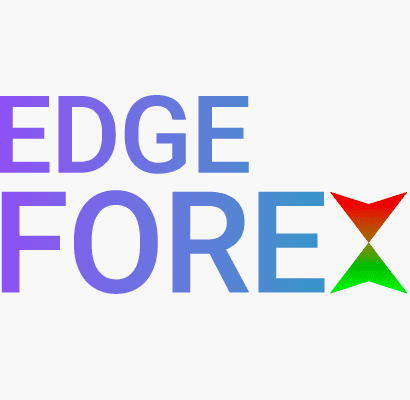The DXY–BRICS paradox surprises many traders. The world keeps discussing de-dollarization, yet the dollar still leads global finance. Markets continue trusting the USD even as the BRICS currency strategy ideas trend. The de-dollarization narrative sounds urgent, but capital flows disagree.
That’s the DXY–BRICS paradox in action. Countries diversify slowly, but the dollar remains an anchor. Dollar dominance and reserve diversification happen together. Central bank gold buying trends signal risk hedging, not a sharp exit.
Global headlines show bold speeches about BRICS currency strategy, commodity-linked settlement, and digital alternatives. Still, the dollar supports most global trade. The DXY–BRICS paradox reminds us that sentiment moves fast, but financial systems move slowly. The de-dollarization narrative creates noise. Money follows liquidity, stability, and yield.
Why Investors Still Choose the Dollar?
The dollar holds strength because of yield and trust. The Federal Reserve kept rates high. Real yields stayed positive longer than peers. Traders chase returns. They also want safety. That keeps the dollar strong despite talk. Dollar dominance and reserve diversification coexist because no other bloc provides the same liquidity. Central bank gold buying trends rise, but Treasuries remain core reserves.
Even when BRICS countries talk about alternatives, they still store assets in US markets. Oil exporters keep funds in dollars. Global shipping uses USD quotes. Corporates borrow in USD because markets trust repayment systems. The DXY–BRICS paradox appears every time panic hits. Investors run to dollars, not away from them.
Short example: when Middle East tension spiked, oil rose, gold moved, and USD strengthened. That shows real behavior. The de-dollarization narrative stays long-term. Daily flows stay dollar-heavy today.
Why De-Dollarization Talk Still Grew?
Even though USD stays strong, the narrative spreads. Russia sanctions changed perception. Many nations fear financial weaponization. That boosted the de-dollarization narrative. BRICS currency strategy talks increased. Cross-border settlement pilots began. Some countries shifted part of trade into local currencies. Dollar dominance and reserve diversification accelerated together. Central bank gold buying trends rose as insurance. But trade still clears mainly in USD.
Nations want choices, not chaos. They diversify slowly. India settles some oil in rupees. China settles some trade in yuan. Gulf nations explore mixed settlement. Still, most pricing remains USD-based. That supports the DXY–BRICS paradox: strategy signals future goals, not immediate reality.
Gold Builds Insurance, Not Replacement
Gold accumulation increased. Central bank gold buying trends set records recently. Gold hedges sanctions, inflation, and instability. But it does not replace the dollar system. It strengthens confidence while nations slowly diversify. Dollar dominance and reserve diversification remain linked. BRICS currency strategy often mentions gold as support, not as a replacement currency.
Gold has no yield and limited payment rails. Trade contracts, shipping finance, and global credit rely on deep USD markets. The DXY–BRICS paradox exists because gold protects reserves while dollar systems remain essential for execution.
Long-Term Trend Is Real But Slow
The future likely brings multi-currency settlement. Not sudden dollar collapse. Nations want autonomy. They build digital rails, local settlement platforms, and commodity-pegged ideas. But credibility takes decades. Investors need transparency, rule of law, and liquidity depth. The dollar still leads here. Dollar dominance and reserve diversification reflect balanced strategy. Central bank gold buying trends support long-term resilience. BRICS currency strategy evolves gradually, not instantly.
Traders often confuse tone with timing. The de-dollarization narrative is real. The timeline is slow. That is the core of the DXY–BRICS paradox.
What Traders Should Watch
Smart traders follow data, not only news. Key signals include:
- US real rate trends
- Fed policy direction
- EM reserve composition shifts
- Gold reserve accumulation
- Oil settlement currency choices
- BRICS currency strategy progress
Dollar dominance and reserve diversification guide macro positioning. Central bank gold buying trends matter for metals traders. The DXY–BRICS paradox rewards patience. The dollar remains powerful today. Diversification builds slowly for tomorrow.
Final Word
The DXY–BRICS paradox reflects two truths. The world prepares for alternatives. The dollar still leads. The de-dollarization narrative grows, yet USD liquidity dominates. BRICS currency strategy creates future optionality, not instant change. Dollar dominance and reserve diversification define this decade. Central bank gold buying trends hedge uncertainty, not revolt. Trade today’s USD strength. Prepare intelligently for gradual diversification.
Click here to read our latest article Geothermal Investment Currency: Which Countries Could Benefit?
I’m Kashish Murarka, and I write to make sense of the markets, from forex and precious metals to the macro shifts that drive them. Here, I break down complex movements into clear, focused insights that help readers stay ahead, not just informed.
This post is originally published on EDGE-FOREX.





